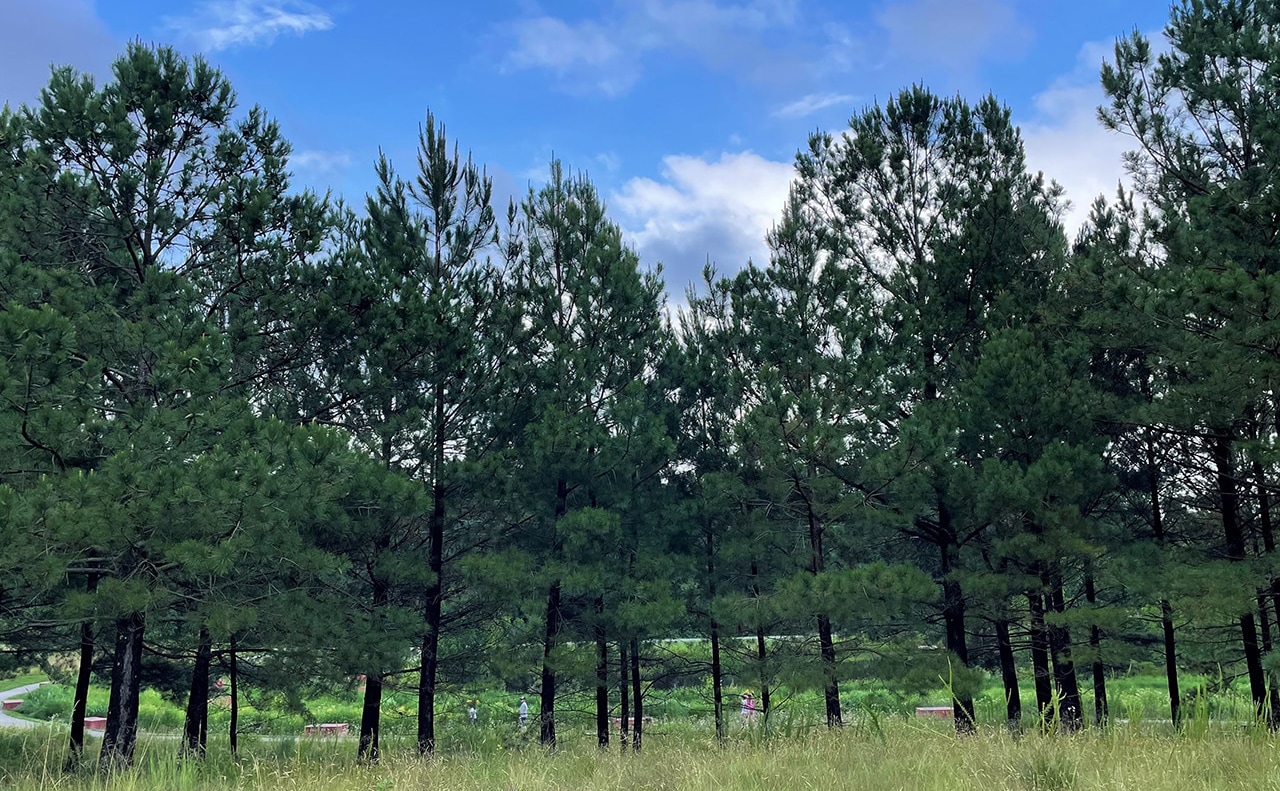Land of the Pines
[[translate(episode,'title')]]
[[translate(episode,'audioCredit') || translate(episode,'credit')]][[translate(episode,'title')]]
[[translate(episode,'audioCredit') || translate(episode,'credit')]]Audio Transcript
You are standing on the paved sidewalk surrounding the Ellipse, which overlooks the meadow. In the distance are various art installations. This sign is situated between two slender trees. Land of the Pines: Hundreds of years ago, the central Piedmont in North Carolina was covered with meadows rich in biodiversity. Meadows grew in openings between pine savannas maintained by both naturally occurring and human-ignited fires. North Carolina has many species of native pine trees. In this area there are three different pine tree species.
The first one is the loblolly pine, which grows between 50 to 120 feet tall. Its needles are a yellowish-green and grow in bundles of two to three. They can grow to be nine inches long. The bark is dark gray-brown and blocky. Loblolly pines have reddish brown cones that are three to six inches long. You can find these tall pines to the right and left of the Ellipse.
The longleaf pine grows up to 100 ft. tall. The trunk is covered in a bark that is thick, reddish brown, and scaly. Its needles are dark green and grow in bundles of three that are 18 inches long. The tree grows almost perfectly straight and naturally prunes its lower branches. Longleaf pinecones are the largest in the eastern US, growing between 6 and 10 inches long. These trees are younger and therefore shorter and can be found growing closer to the path on both sides of the ellipse.
The shortleaf pine grows between 80 to 100 feet tall. Its needles are dark bluish green and grow up to three to five inches long in bundles of two or three. The bark is thick and dark brown. The bark is also broken into irregular, scaly plates. The shortleaf’s pinecones are two inches long and shaped like an egg. Each of the cone’s scales has a sharp point at the end. You can find this tree below this path, on the other side of the Blue Loop.
If you would like, reach out and touch the right half of the sign to feel a diagram of these three trees. From left to right are representations of the loblolly, longleaf, and shortleaf pines, with their needles and pinecones. Replanting a diverse mix of these native pine species in the Park is part of a long-term effort to provide a healthy ecosystem for wildlife.
Thank you for taking time to explore the wildlife at the Museum Park. You have just completed the shorter experience of the All-Access Eco Trail. To head back to the Welcome Center, keep to the right, take the second path on your left, and walk straight. Feel free to explore more of the Park on your own.
Pine tree diagrams by Robert O’Brien, 2018, Courtesy of Texas A&M Forest Service
